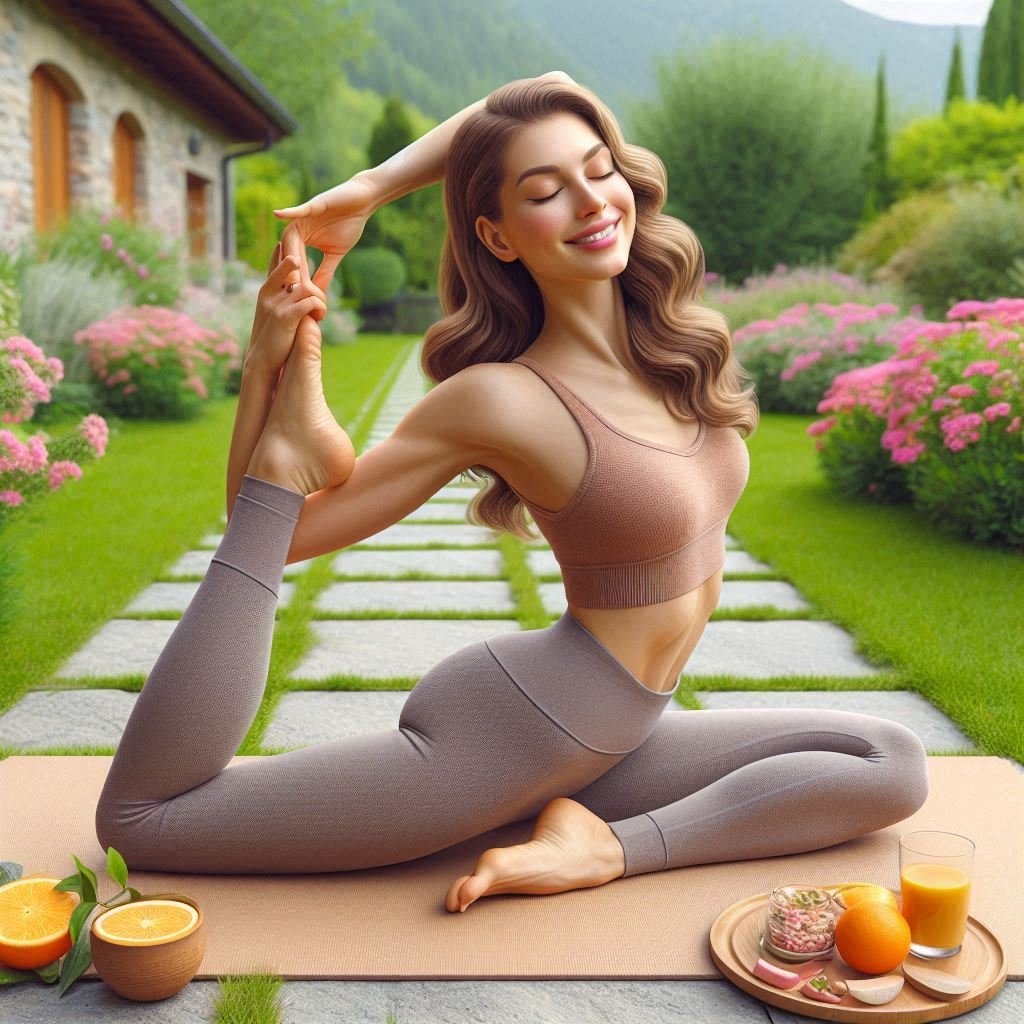
As described earlier, Ashtanga Yoga has eight limbs or parts. So far Yama, Niyama, Asana, Pranayama has been described. In the present article Pratyahar, Dharana, Dhyana and Samadhi shall be described.
Pratyahar(withdrawal)
Before Pratyahar one should lie in Sukhasana comfortably and motionlessly. Then one should practice Pranayama by keeping mind on the movements of breath across the nostrils. After half an hour in Pranayama, there is cut off in inhalation and exhalation. Mind and Pranabreath for practical purpose) become one and motionless. In this state one should practice Pratyahar.
Patanjali describes – when senses leave their objects of enjoyment and get engaged in realising true self(svarup), it is called Pratyahar(II>54). So far Yoga is concerned, there are two directions – one is outside and the other is inside. Outside there is enjoyment(bhoga) and enjoying(ahara) and inside there is Yoga and Pratyahar(withdrawal from enjoyment). So long as senses are fixed on the objects of enjoyment, there is enjoying(ahara); but as soon as senses withdraw from them, there is Yoga and Pratyahar.
In enjoyment there is loss of energy; whereas in Yoga there is conservation of energy. Inside there is treasure of energy, happiness, knowledge, health and longevity; but outside there is loss of energy, pain, ignorance, disease and death. as people take their earned money from home and spend them outside, so people earn energy, happiness inside, but spend them outside. People who spend more and more money outside, get bankrupt and people who spend more and more energy outside get diseased. So a true Yogi earns more and more energy inside, but spends less and less outside to remain happy, knowledgeable and healthy.
Pratyahar is practiced after Pranayama in the same posture(sukhasana). It is a mental exercise only. In the legs there are six sets of joints and in the body there are six Chakra. From the tip of fingers in the legs one should rise upwards joint by joint and Chakra by Chakra. In each joint or Chakra one should remain for a while and feel that lower parts from that joint or Chakra have gone senseless. In this manner one should reach Ajna Chakra in between eyebrows. At Ajna Chakra one should feel that there is no sensual feeling of the body. One should see nothing, hear nothing or feel nothing. There is neither the feeling of the body nor of the material world.
Dharana(to hold), Dhyana(meditation)and Samadhi(total concentration)
Dharana means to hold. After one withdraws oneself from the gross body and senses, one should hold mind firmly. One can enter into Samadhi through this mind only. The saints and sages of Ancient India first realised that nothing is as great as mind in the whole universe. Mind is the cause of everything; creation, maintenance and destruction of this universe goes on because of this mind only. It is also the cause of bondage and liberation of all. Mind can be a good servant, good friend as well as good master. So in Dharana one learns how to hold mind firmly for own liberation.
After Dharana comes Dhyana(meditation). In Yoga meditator, meditation and the object of mediation are one. Because the aim of Yoga is to realise the true self. In Dharana and Dhyana mind should be fixed at Ajna Chakra in between eyebrows(trikuti). Eyes should be closed in practicing all the limbs of Yoga starting from Asana to Samadhi. However religious masters teach to meditate upon some symbols or pictures of Gods and Goddesses with eyes open. Through such meditation mind does not come inwards and so no Yoga shall be practised.
Through regular and sincere practice of Pranayama, Pratyahar, Dharana and Dhyana, one may enter into Samadhi one day. Only a true and rare practitioner achieves this state, also called Turiya. Normally all men experience three states – waking, dreaming and deep sleep. The state of Turiya, which is the fourth state of a being, is experienced by a Yogi alone. This is such a dreaming state, where one is awake while sleeping. This is such a waking state, where one does not use one’s body and senses. This is such a deep sleep where one is fully conscious. As without sound sleep a man cannot remain healthy and peaceful, so without Turiya a man cannot be healthy and peaceful completely. For complete peace and bliss, for complete knowledge, freedom and liberation, every individual should practice Yoga and try out to reach the state of Turiya or Samadhi.
Author Mr Premansu Chand, 40, is an Indian and working as Govt. Officer. He practices and teaches Patanjali Yoga in its purest form. He has published a book “the purest interpretation of spiritualism and yoga’ through http://lulu.com , [http://www.premansuchanda.com]




